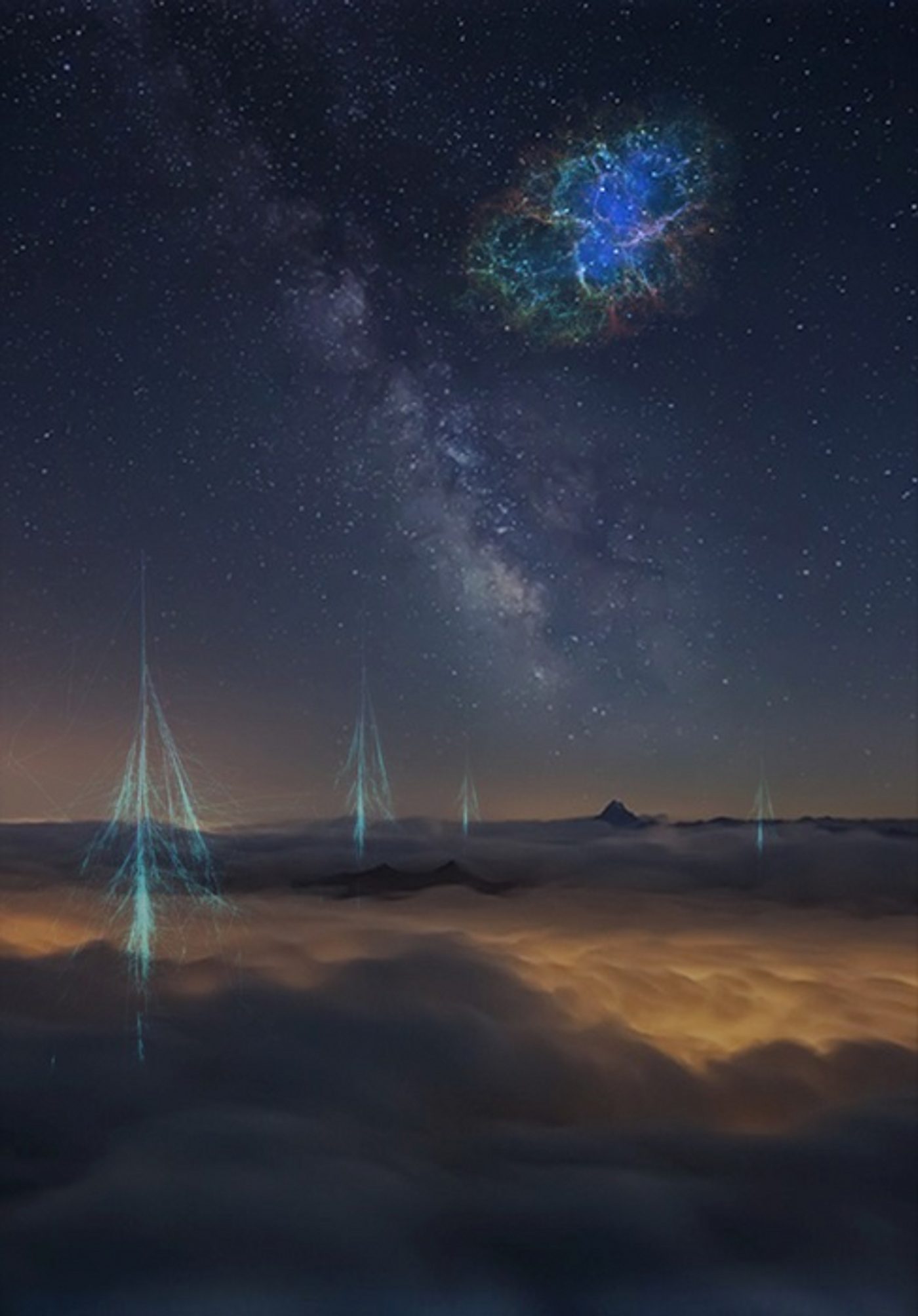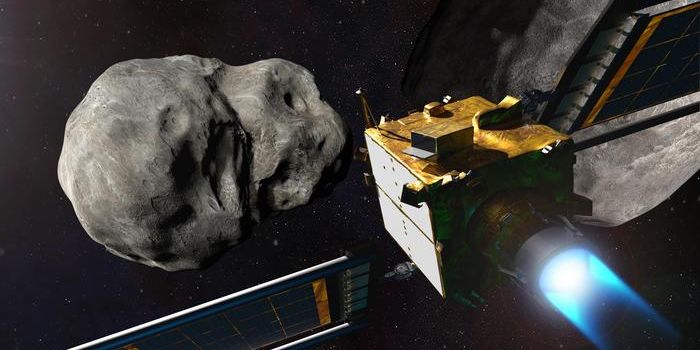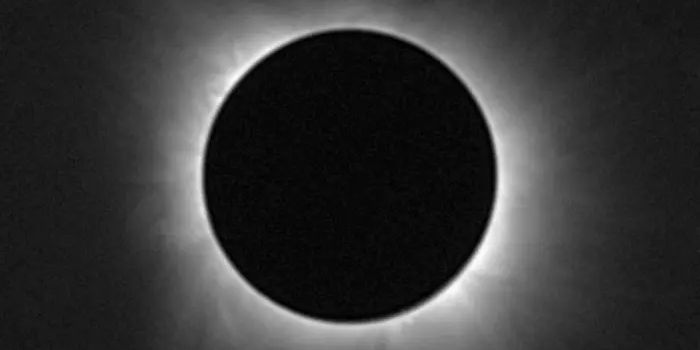Supernovae Could Be Responsible for Earth's Marine Biodiversity 500 Million Years Ago
Carl Sagan is famously quoted for saying, "We are made of star stuff", because when a star dies, it sheds its material back out into the cosmos either from a slow death like a white dwarf, or from a supernova explosion. This discharged material eventually becomes another star, and the planets form around that. But what if a supernova were to directly affect life on a planet, specifically Earth? This is what a researcher from the Technical University of Denmark (DTU) attemts to figure out as they explore how supernovae could have influenced marine biodiversity on ancient Earth, specifically during the Phanerozioc Eon approximately 500 million years ago. This study holds the potential to help scientists better understand how events in outer space could impact life’s formation and evolution.
Illustrated photo featuring green lightning sprites with the clouds and the Crab Nebula (upper right), which is approximately 6500 light-years from Earth and is not visible with the naked eye. (Illustration: Henrik: Svensmark, DTU Space). (Credit: Henrik Svensmark, DTU Space)
“A possible explanation for the supernova-diversity link is that supernovae influence Earth's climate,” said Dr. Henrik Svensmark, who is a senior researcher at DTU Space, and sole author of the study. “A high number of supernovae leads to a cold climate with a large temperature difference between the equator and polar regions. This results in stronger winds, ocean mixing, and transportation of life-essential nutrients to the surface waters along the continental shelves.”
For the study, Dr. Svensmark examined the correlation between marine life biodiversity curves and frequencies of supernovae and discovered a close correlation between the two. Dr. Svensmark concluded that the supernovae are responsible for transporting nutrients which provide the necessary energy for marine life.
"The new evidence points to a connection between life on Earth and supernovae, mediated by the effect of cosmic rays on clouds and climate", said Dr. Svensmark.
This study builds off several previous studies (listed below) Dr. Svensmark was involved in, three of which he was lead author, and demonstrated changes in Earth’s climate, specifically pertaining to cloud formation, with increases by several hundred percent over millions of years of cosmic rays striking the Earth’s atmosphere.
What new discoveries will scientists make regarding cosmic rays and life on Earth? Only time will tell, and this is why we science!
Sources: Ecology and Evolution, EurekAlert!
As always, keep doing science & keep looking up!
Svensmark Previous Studies:
1. Svensmark, H., Supernova Rates and Burial of Organic Matter, Geophysical Research Letters, 48, 2021, e2021GL096376. https://doi.org/10.1029/2021GL096376
2. Svensmark, H. and Friis-Christensen, E., Variation of Cosmic Ray Flux and Global Cloud Coverage -A missing Link in Solar-Climate Relationships, Journal of Atmospheric and Terrestrial Physics, 59, 1225, (1997)
3. Shaviv, N. J., Svensmark, H. & Veizer, J. The phanerozoic climate. Annals New York Academy Sciences 1519, 7–19, DOI: https://doi.org/10.1111/nyas.14920 (2023).
4. Svensmark, H.; Evidence of nearby supernovae affecting life on Earth. 530 MNRAS, 423 , 1234-1253. doi: 10.1111/j.1365-2966.2012.20953.x (2012)









